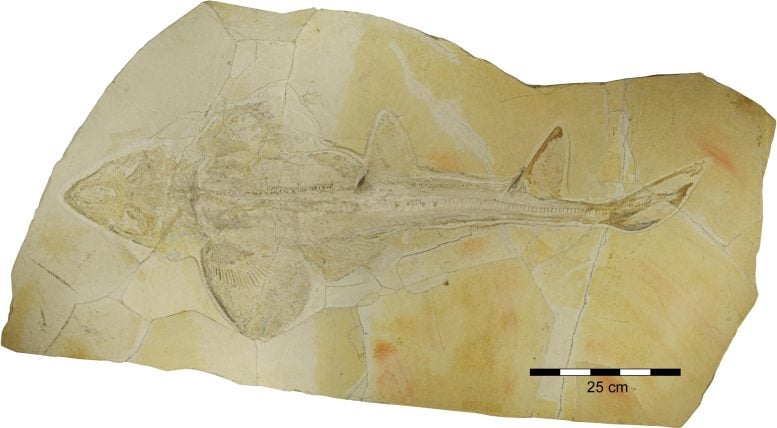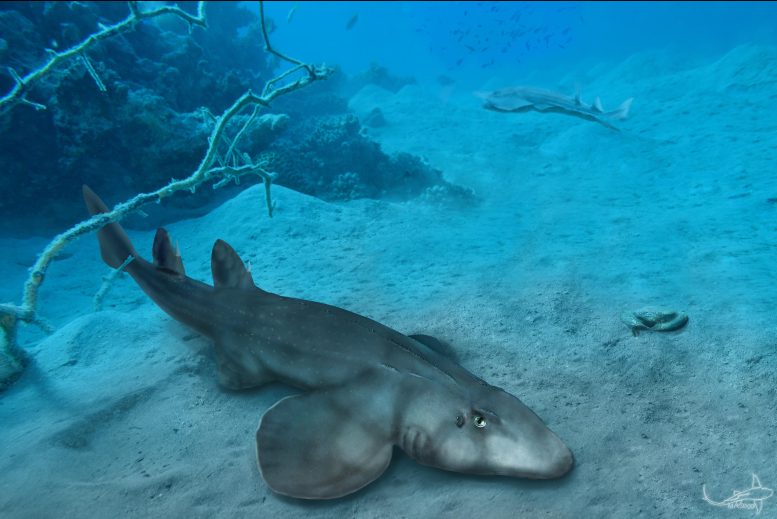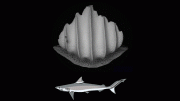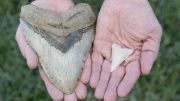
Fossil of the Late Jurassic shark Protospinax annectans from Solnhofen and Eichstätt, Germany. Credit: Sebastian Stumpf
The evolutionary history of sharks and rays has been illuminated by a recently constructed phylogenetic tree.
A recent study by an international team of researchers, led by paleobiologist Patrick L. Jambura from the University of Vienna’s Department of Palaeontology, has revealed that cartilaginous fish have undergone more evolutionary changes than previously thought. The evidence for this conclusion was obtained from new fossils of a shark-like ray called Protospinax annectans, which show that sharks were highly evolved during the Late Jurassic period. The findings of the study have been published in the journal Diversity.
Sharks, rays, and ratfish are a group of ancient animals known as cartilaginous fishes, which have been present on earth for over 400 million years, predating the dinosaurs. They have also endured all five mass extinctions and their fossil remains can be found globally in great quantities. However, typically only their teeth remain intact as the cartilaginous skeleton decays along with the rest of the body and does not fossilize.
A unique window into the past
In the Solnhofen archipelago, a so-called “Konservat Lagerstätte” in Bavaria, Germany, skeletal remains and even imprints of skin and muscles of Late Jurassic vertebrates (including cartilaginous fishes) have been preserved due to special preservation conditions. The research team used this circumstance to take a closer look at the previously unclear role of the already extinct species Protospinax annectans in the evolution of sharks and rays, also with the help of modern genetic evidence.

Paleoreconstruction of the Solnhofen Archipelago 150 million years ago showing Protospinax annectans and the Jurassic ray Asterodermus platypterus. Credit: Manuel Andreas Staggl
“Protospinax carried features that are found in both sharks and rays today,” explains study author Patrick L. Jambura. Protospinax lived some 150 million years ago and was a 1.5-m-long, dorso-ventrally flattened cartilaginous fish with expanded pectoral fins and a prominent fin spine in front of each dorsal fin. Although known from well-preserved fossils, the phylogenetic position of Protospinax has puzzled researchers ever since it was first described in 1918.
“Of particular interest,” Jambura continued, “is whether Protospinax represents a transition between sharks and rays as a ‘missing link’ — a hypothesis that has gained considerable appeal among experts over the past 25 years.” Alternatively, Protospinax could have been a very primitive shark, an ancestor of rays and sharks, or an ancestor of a certain group of sharks, the Galeomorphii, which includes the great white shark today — all of which are exciting ideas whose plausibility has now been clarified by scientists.
One mystery solved, another one remains
Incorporating the latest fossil finds, Jambura and his international team reconstructed the family tree of extant sharks and rays using genetic data (mitochondrial DNA) and embedded fossil groups — including Protospinax annectans — using morphological data. The results of the analysis were startling: Protospinax was neither a “missing link” nor a ray nor a primitive shark — but a highly evolved shark.
“We tend to think of evolution like a hierarchical, ladder-like system, in which older groups are at the base, while humans, as a very young species in Earth’s history, are at the top. In truth, however, evolution has never stopped even for these primitive representatives, but they continue to evolve day by day via changes in their DNA, just as we do. This is the only way they have been able to adapt to constantly changing environments and survive to this day,” says Jambura.
Even though cartilaginous fishes as a group have survived to this day, most species disappeared during their evolution, including Protospinax. Why Protospinax became extinct at the Jurassic-Cretaceous boundary some 145 million years ago and why there are no comparable shark species today, while the ecologically similarly adapted rays exist relatively unchanged to this day, remains a mystery at this point.
Reference: “Systematics and Phylogenetic Interrelationships of the Enigmatic Late Jurassic Shark Protospinax annectans Woodward, 1918 with Comments on the Shark–Ray Sister Group Relationship” by Patrick L. Jambura, Eduardo Villalobos-Segura, Julia Türtscher, Arnaud Begat, Manuel Andreas Staggl, Sebastian Stumpf, René Kindlimann, Stefanie Klug, Frederic Lacombat, Burkhard Pohl, John G. Maisey, Gavin J. P. Naylor and Jürgen Kriwet, 21 February 2023, Diversity.
DOI: 10.3390/d15030311









Be the first to comment on "A Unique Window Into the Past – Ancient Jurassic Shark Fossil Reveals Surprising Evolutionary Truth"